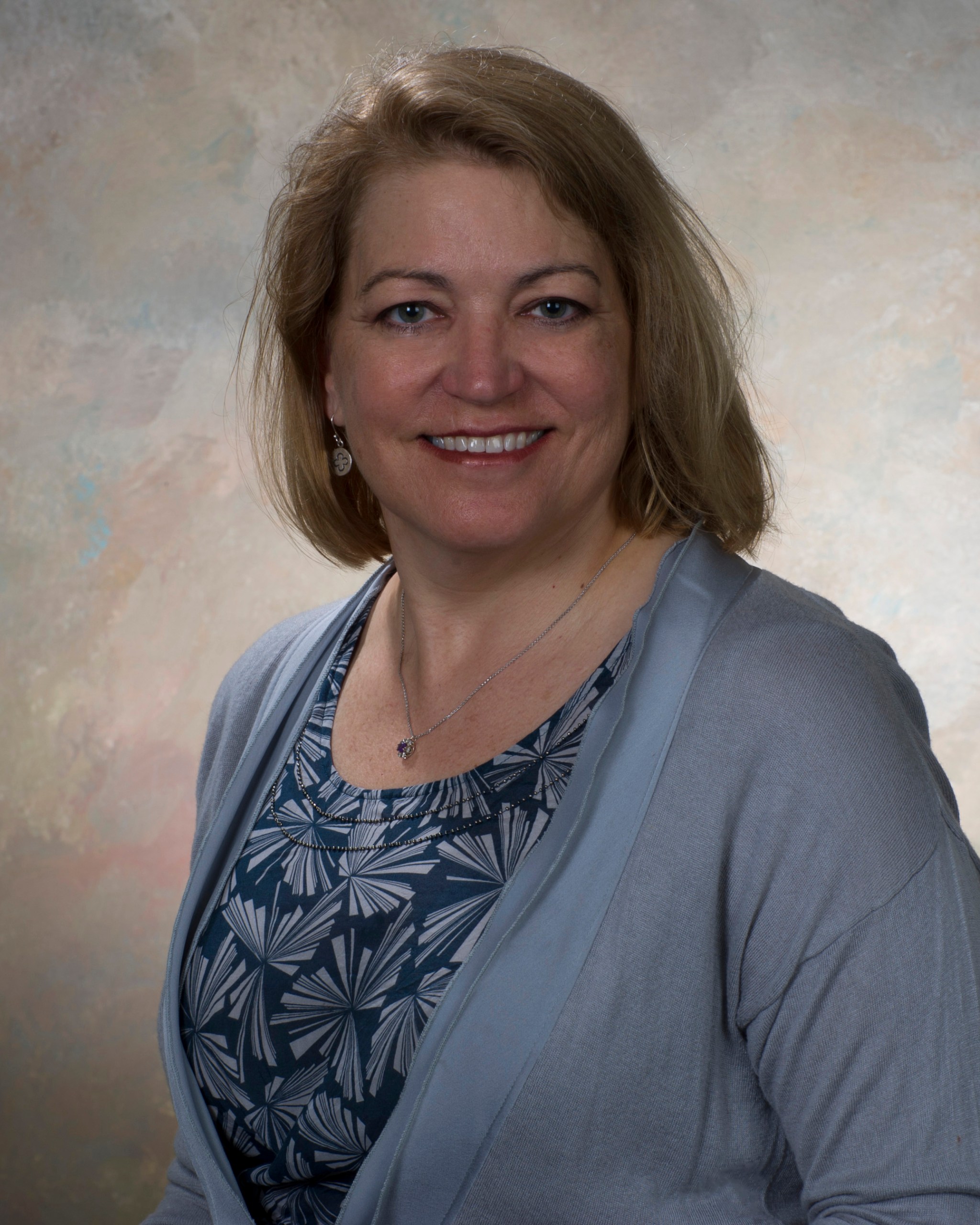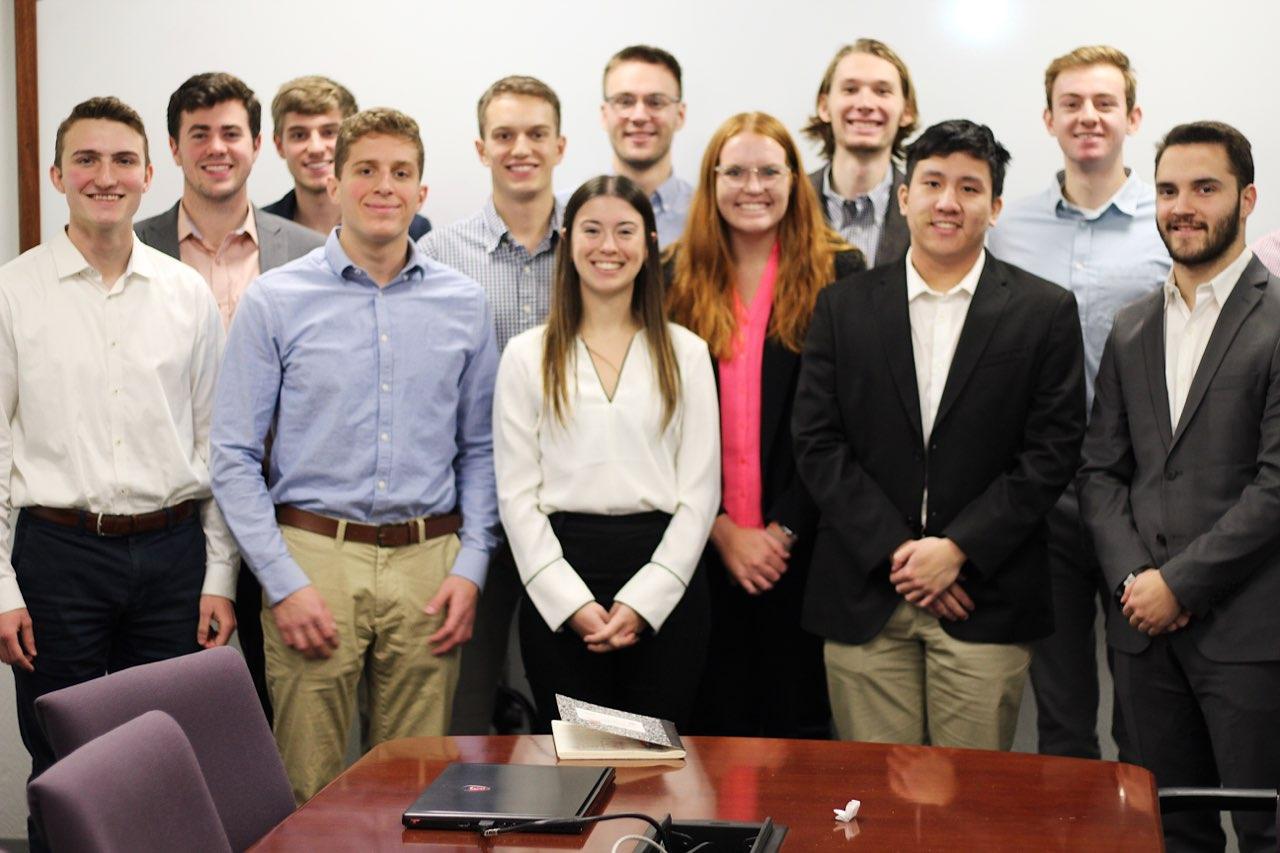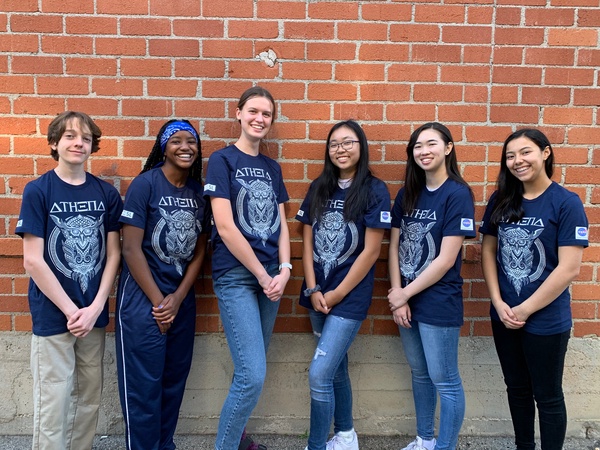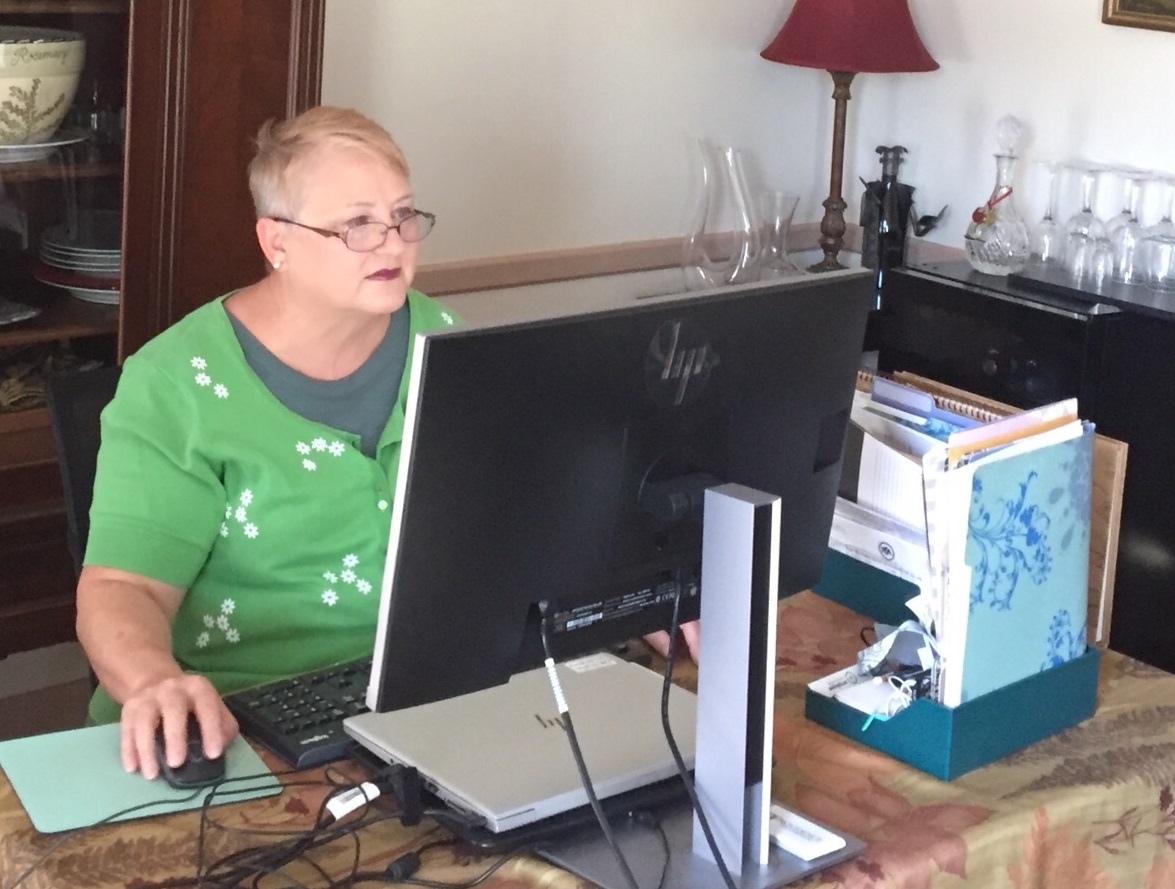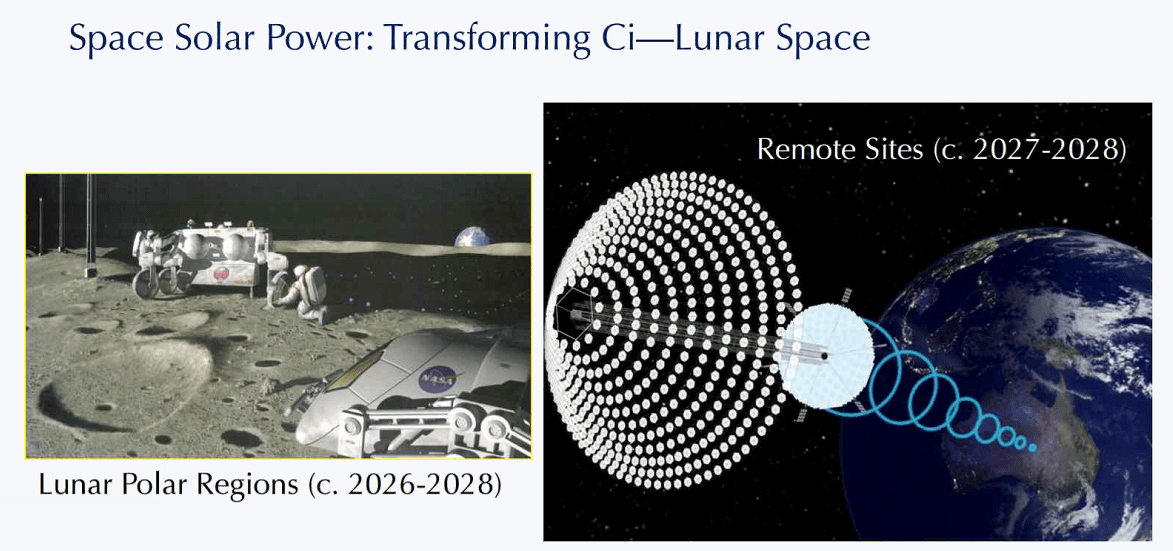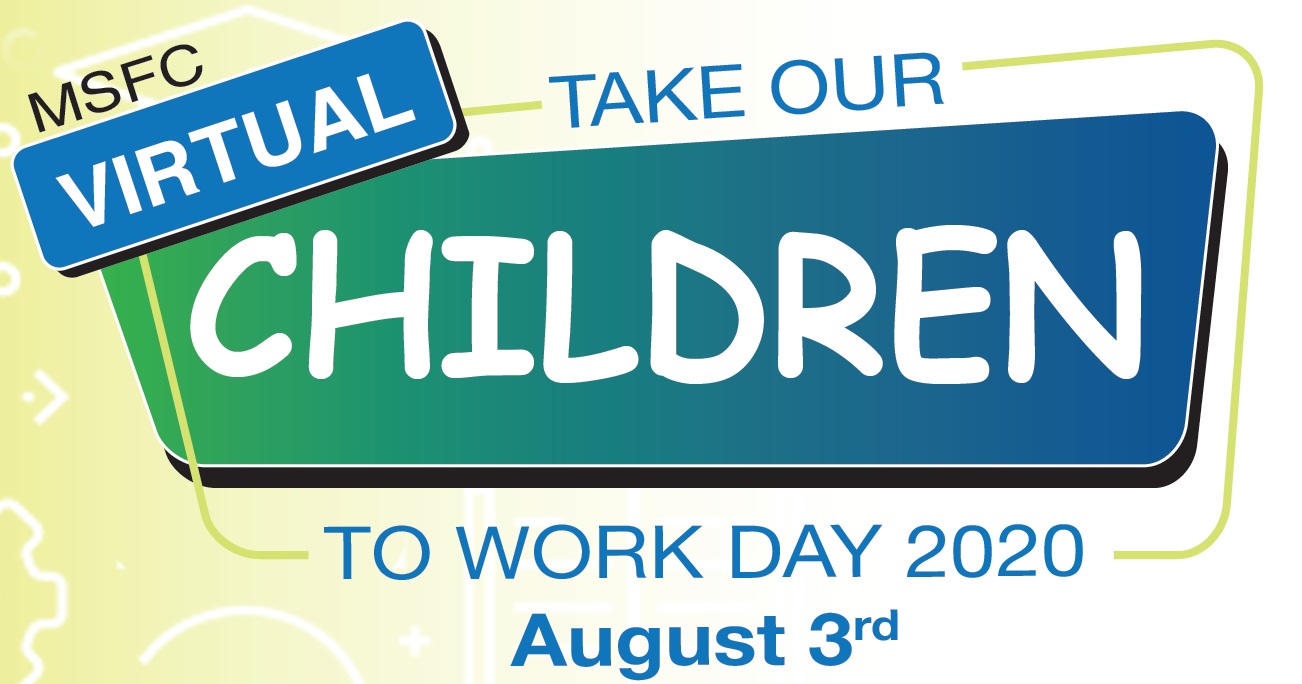In This Week’s Star
- NASA Invites Nation to Help Count Down to July 30 Launch of Mars 2020 Mission
- Take 5 with Angie Jackman
- NASA Building SLS Rocket Core Stage for Artemis II
- Mission Complete: NASA Announces Artemis Generation Winners of NASA Student Launch
- NASA’s Centennial Challenges Celebrates Marshall’s 60th Anniversary
- New Marshall Technical Library Provides Research Materials, Assistance, More
- Artemis Innovation Management Solutions President John Mankins Presents Space Solar Power at Virtual Tech Talk
- Marshall to Host Virtual ‘Take Our Children to Work Day’ Aug. 3
- This Week in NASA History: Second Crewed Skylab Mission Launches – July 28, 1973
NASA Invites Nation to Help Count Down to July 30 Launch of Mars 2020 Mission
The Mars 2020 mission to deliver the Perseverance rover to the Red Planet is counting down to its scheduled launch July 30 – and NASA is inviting the public to join the online excitement.
The mission payload, which passed its Flight Readiness Review on July 22, will fly on a United Launch Alliance Atlas V rocket, set to lift off at 6:50 a.m. from Space Launch Complex 41 at Cape Canaveral Air Force Station in Florida. Live coverage will begin at 6 a.m. on NASA Television and the agency’s website, and will include a special rendition of “America the Beautiful” by Grammy Award-winning singer and songwriter Gregory Porter.
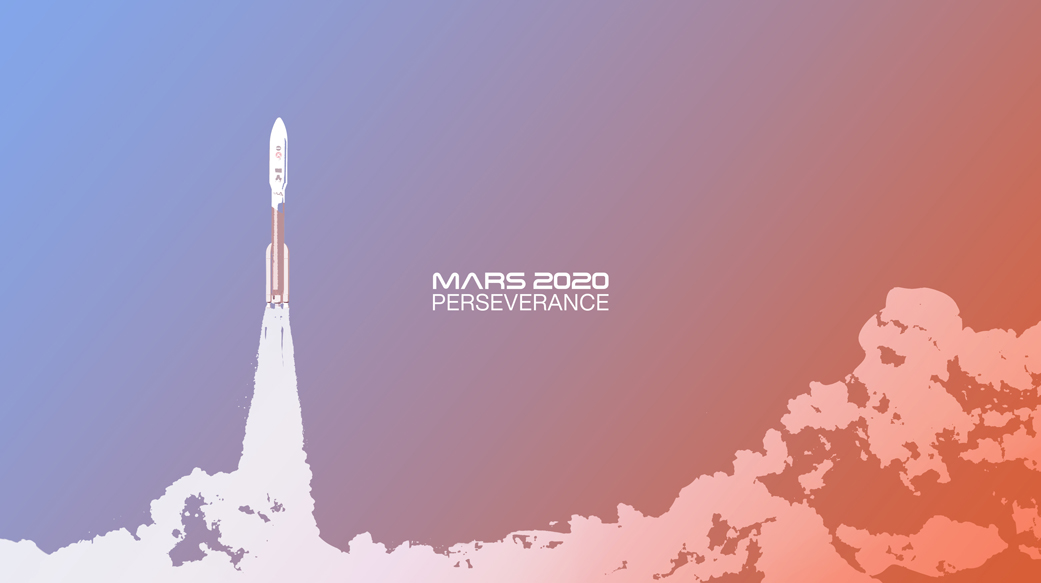
Perseverance is NASA’s latest rover, designed to search for evidence of ancient microbial life on Mars. It’s scheduled to touch down in February 2021 at Jezero Crater – first identified more than 15 years ago by student researcher Caleb Fassett, now a planetary scientist at NASA’s Marshall Space Flight Center – to study the planet’s climate and geology, gather rock and soil samples to send back to Earth, and help pave the way for human exploration of Mars.
NASA’s virtual launch experience for the Mars 2020 Perseverance rover includes a variety of live and prerecorded content, a behind-the-scenes look at the mission, augmented reality filters, a chance to submit videos to be aired during the launch broadcast, tool kits for students, Mars photo souvenirs, and the opportunity for the public to send their names to the Red Planet.
More than 112,000 people registered to be virtual guests for NASA’s SpaceX Demo-2 test flight launch in May. NASA anticipates even greater participation in the Mars 2020 Perseverance rover launch.
To learn more or register to be NASA’s virtual guest for the launch, go here. The public also can take part in a variety of activities leading up to launch, including:
Virtual NASA Social: NASA will host a global, virtual “NASA Social” via a public Facebook group to offer social media users a behind-the-scenes view of the Perseverance launch and enable them to take part in NASA live pre-launch opportunities beginning July 29. Registration is now open. For more details, go here.
Send Your Name to Mars – Again: When Perseverance launches to Mars, it will carry three dime-size chips with 10.9 million names submitted by people all over the world, who can obtain special “Now Boarding” stamps for taking part. Join the naming fun on a future Mars mission here.
#CountdownToMars: NASA enthusiasts can record launch countdown video clips and tag them on social media using #CountdownToMars. Selected clips will be featured on NASA social media and during launch day coverage. Learn more here.
Virtual Launch Packet: Browse the interactive packet, or download a PDF version, packed with info about the Mars 2020 launch, the Perseverance rover, and all NASA’s available print products for the mission.
Mars Photo Booth: Take a souvenir photo with NASA’s virtual Mars Photo Booth – next to the mighty Atlas V rocket that will launch the Mars 2020 mission, standing on the dusty red Martian plains, or standing next to the Perseverance rover itself at NASA’s Jet Propulsion Laboratory, where the rover was assembled. Go here to upload a favorite picture, choose a background, and download the new image.
Augmented Reality Filters: NASA has debuted new #CountdownToMars augmented reality filters for Facebook and Instagram. Take a virtual trip to Mars, give the official countdown to launch as a Mission Control flight director, or roll a 3D Mars rover into any environment.
Oculus Front Row Seat: Use Oculus virtual reality technology to get a free front row seat to the launch broadcast via Facebook. Find details here.
Spacecraft 3D Rover Experience: Get familiar with all the features of the Perseverance rover with this interactive 3D feature, available here.
Student Activities and Lessons: Launch rockets, build robots, and explore worlds beyond Earth with a collection of NASA projects, toolkits, and contests. Explore Mars as a curious student of the universe, or download a variety of Mars-themed lessons courtesy of JPL. Parents and teachers also can put a Martian spin on their summer learning curriculum with NASA’s hands-on Mars 2020 STEM Toolkit, integrating lessons that combine biology, geology, physics, mathematics, engineering, coding, and language arts.
Mars 2020 Perseverance is part of America’s larger Moon to Mars exploration mission, which includes new journeys of discovery to the Moon as a stepping stone to human exploration of the Red Planet. NASA’s Artemis program will send the first woman and next man to the Moon by 2024 and establish a sustained human presence there by 2028.
Take 5 with Angie Jackman
As project manager for the Mars Ascent Vehicle, Angie Jackman is counting down the days until the July 30 launch of NASA’s Perseverance rover to the Red Planet.
A native of Montgomery, Jackman has dreamed of having a hand in Mars missions since her career at NASA’s Marshall Space Flight Center began in 1985. Shortly after earning a bachelor’s degree in industrial engineering from Auburn University, she joined the agency as a reliability engineer.
“After the Challenger accident in 1986, I got involved in the investigation and the Return to Flight work,” Jackman said. “I found it to be endlessly complex and challenging – and that’s when I really fell in love with NASA.”
Jackman now faces the challenge of leading a team focused on developing a rocket dubbed the Mars Ascent Vehicle, which will launch Perseverance’s stash of rock and soil samples from the Red Planet into space. In this role, she is involved in all aspects of the operation – including engineering design, management, procurement, facilities, and business.
Jackman virtually met with Marshall media specialist Taylor Goodwin to discuss how the Mars Ascent Vehicle team operates “as one small piece of a very large mission.”
Question: Can you describe the environment in the Mars Ascent Vehicle team? How are team members collaborating and supporting one another to maximize success and innovation?
Jackman: We have a challenging mission, which always keeps things interesting. We get to build this vehicle as an in-house design, and it touches every aspect of what Marshall brings to the table as a center. We’re doing launch vehicle work, but we’re also doing spacecraft work. At the same time, we have to make sure that we can do it financially – so we have the business, procurement, and facilities side of the house tying in with the engineering side. I really try to emphasize that this is more than a fun design project. We have to develop something that we can afford and that we can deliver on time. Everyone operates as part of a very integrated system. We have to rely on each other and work to meet the schedule, and that has proved just how dependent we are on each teammate.
Question: What kind of partnerships is your team pursuing to help the agency and the nation pursue the Artemis missions?
Jackman: The Mars Ascent Vehicle will be the first rocket to launch from another planet. So while my team may not be putting the first woman and next man on the Moon, we will be learning lessons in our mission that will feed into the Artemis program. Mars is a very cold, harsh environment. We’re only bringing back a small sample, but we may learn things about the planet and develop skills that will better equip the agency to return to Mars in the future.
Question: How does your team define and achieve mission success?
Jackman: The biggest challenge lies in the fact that this is a planetary mission, meaning our launch windows come by so rarely. The first window will be in 2026, the next in 2028, and then the next in the mid-2030s. We have to hit that schedule, so our criteria for success is delivering a quality product in the required timeframe. One thing we try to do as a team is to prepare for conflict. To do that, we have to establish trust within the team. Then if we run into a problem, we can keep our mind on the big picture and work through any issues.
Question: Can you describe the most rewarding moment for you in your time with the Mars Ascent Vehicle team?
Jackman: The thing that I enjoy the most is that we have such a broad team as far as age and experience. When I hear the team talk about this mission with such excitement, counting down the days until the upcoming Perseverance launch, it makes everything worth it. We all understand our roles and work together to contribute to something bigger.
Question: What advice would you give to students and young professionals who want to be part of NASA’s mission?
Jackman: We need so many different skills and perspectives throughout the workforce. For curious people with varied interests who love a challenge, this is really good work. Our reputation may call for engineers, but it takes the entire community to make us successful. It is our responsibility to tie in more and more people with unique backgrounds and talents to help this agency reach its potential.
Previous Take 5s
Rhega Gordon, Marshall’s chief financial officer
Robert Champion, director of Michoud Assembly Facility
Bill Marks, deputy director of Marshall’s Office of Center Operations
Katherine Van Hooser, Marshall’s chief engineer
Bobby Watkins, manager of the Human Exploration Development & Operations Office at Marshall
Neil Rodgers, director of the Office of the Chief Information Officer at Marshall
Lisa Watson-Morgan, manager of NASA’s Human Landing System Program
Mary Beth Koelbl, deputy director of Marshall’s Engineering Directorate
NASA Building SLS Rocket Core Stage for Artemis II
Teams at NASA’s Michoud Assembly Facility are building the core stage of NASA’s Space Launch System rocket for Artemis II, the first crewed mission to the Moon in NASA’s Artemis program. The SLS rocket’s 212-foot-tall core stage provides more than 2 million pounds of thrust to help send astronauts aboard NASA’s Orion spacecraft around the Moon. Because each of the five structures that make up the core stage are so large, teams build the elements separately, then connect them together to form one stage. This video shows the work completed by Michoud teams since January 2020. For more information about SLS, visit here.
Mission Complete: NASA Announces Artemis Generation Winners of NASA Student Launch
By Will Bryan
After eight months of late nights writing reports, early morning presentations to NASA rocketry experts, and weekends spent building, testing, flying, and perfecting their machines, the mission is complete for the 54 teams of the 2020 NASA Student Launch competition. The category and overall winners were announced virtually July 23. Vanderbilt Aerospace Design Lab from Vanderbilt University in Nashville, Tennessee, claimed top honors for the seventh time in the last eight years.
“This year’s teams showed true innovation and determination as they tackled the new payload challenge and the unconventional methods we had to employ to complete the competition,” said Fred Kepner, an education program specialist and lead for Student Launch at NASA’s Marshall Space Flight Center, host of the competition. “Despite the unique obstacles they faced this year, their commitment to technical excellence and carrying on in the spirit of the competition never wavered.”
Although the annual launch finale event was cancelled due to the COVID-19 pandemic, teams were still able to complete most of the design, building, and testing portions of the competition.
NASA Student Launch challenges middle school, high school, college, and university teams from across the United States to build and fly a high-powered amateur rocket carrying a complex payload to over 4,000 feet above the ground. The rocket then must descend and land safely before its scientific or engineering payload can begin its work. This year’s competition drew teams from 19 states and Puerto Rico.
College and university teams developed payloads to navigate to a designated sample site, retrieve a simulated sample of planetary ice, and navigate at least 10 feet away from the site with the sample stored safely aboard. How they tackled the challenge was up to them. Middle and high school teams could elect to attempt the college/university division challenge, or they could propose a scientific or engineering payload of their own curiosity.
The Vanderbilt team will receive a $5,000 award from Marshall industry partner Northrop Grumman. The University of North Carolina at Charlotte finished in second place and will receive a $2,500 award from the National Space Club-Huntsville. The Rookie Award, given to the top new team in the competition, was won by the University of Puerto Rico, Mayagüez Campus. In the middle/high school division, Notre Dame Academy from Los Angeles won the Judge’s Choice Awards – top honors for that division.
The top 10 finishers in the college/university division are:
- Vanderbilt University
- University of North Carolina at Charlotte
- University of Alabama in Huntsville
- University of Akron, Ohio
- North Carolina State University, Raleigh
- University of Notre Dame, South Bend, Indiana
- Auburn University, Auburn, Alabama
- Oregon State University, Corvallis
- Purdue University, West Lafayette, Indiana
- University of Cincinnati, Ohio
Teams earn points for progress and successes during the eight-month competition, and the team with the most points wins. Awards also are presented in 11 different categories that range from payload design and safety to best social media presence and STEM – science, technology, engineering, and mathematics – outreach. A full list of the category winners can be seen here.
For 20 years, Student Launch has provided a realistic experience to students that resembles the development, test, and operational lifecycle NASA and industry engineers use when developing and operating new hardware. It is one of the seven Artemis Student Challenges.
Marshall’s Office of STEM Engagement manages Student Launch to stimulate innovation and advance NASA’s mission through collaboration with educational institutions and students – the next-generation that will help us explore the Moon and travel even farther to Mars. It also furthers NASA’s goal of attracting and encouraging students to pursue degrees and careers in the STEM fields. NASA’s Human Exploration and Operations Mission Directorate and the Office of STEM Engagement, as well as Northrop Grumman, and the Huntsville chapter of the National Space Club provide funding and leadership for the initiative.
For more information about NASA’s Student Launch, visit here.
For more information about NASA’s Artemis Student Challenges, visit here.
Bryan, an ASRC Federal/Analytical Services employee, supports the Office of Strategic Analysis & Communications.
NASA’s Centennial Challenges Celebrates Marshall’s 60th Anniversary
NASA’s Marshall Space Flight Center has been home to NASA’s Centennial Challenges program since 2010. As Marshall celebrates 60 years as a center, Centennial Challenges would like to thank the center and its employees for their support. Together, Marshall and Centennial Challenges have inspired members of the public, industry, and academia to join the agency in developing new technologies furthering space exploration.
New Marshall Technical Library Provides Research Materials, Assistance, More
As the Redstone Scientific Information Center prepares to decommission its public website Sept. 30, the new Marshall Technical Library at NASA’s Marshall Space Flight Center already is picking up its services: offering periodical subscriptions, online research support for obtaining scientific or engineering documents, and, in the future, housing a similarly comprehensive physical library.
Marshall team members working remotely due to the COVID-19 pandemic should contact Marshall senior librarian Paula Laurita, who will oversee the transfer of existing services from the RSIC and implement new subscriptions, seeking any and all requested scientific, engineering or hardware documentation, bibliographical records, research articles, and other technical resources.
The library’s virtual home – currently found on Inside Marshall – will transition to Marshall’s new Office 365-based intranet in August. Team members are encouraged to visit the site for news about newly available subscriptions to industry and academic journals and library resources around the world, calls for papers, information about relevant online research communities, and updates on availability of digital and physical publications and other content.
“Our plan is to manage Marshall’s hard-copy resources – including thousands of books, journals, and government reports, most emphasizing aeronautics, aerospace engineering, and rocketry – through multiple, satellite libraries maintained by key organizations at the center,” Laurita said. A centralized physical library for journal resources will be maintained in Building 4708. The primary library office will be in Building 4487.
Future plans are in the works for those resources to be made available to Marshall team members to check out like in any conventional library. While access remains limited during the pandemic, Laurita encourages interested parties to browse the Marshall library’s “LibGuide” to Databases and Resources, a list of the open literature resources available until such time as the physical library can open.
Though some RSIC online databases remain available through the end of September, the Marshall Technical Library is already managing and making available online article subscriptions – including those formerly handled by the Redstone library, which will discontinue its subscription services and all remaining functions Sept. 30.
New subscriptions are steadily being added to the Marshall list as funding is made available, Laurita said.
“We’re working with the NASA Library Network, the agency’s overarching library organization, to jointly subscribe to more databases and online journals,” she said. “That’s an effective cost-saving measure and helps ensure technical resources are available to all members of joint, multicenter work groups and tasks forces.”
For assistance with a new subscription, to update a past subscription before the RSIC service shutters, or to inquire about availability of a specific article, contact Laurita via the library homepage on Inside Marshall, or email her directly. It’s her goal to answer every request within 24 hours, she said.
The NASA Library Network itself is available via direct link from the Marshall library page on Inside Marshall, and Laurita will work with team members to obtain materials or resources identified in that system. All its assets – across NASA’s 10 field centers – are listed in NASA’s Galaxie catalog, an archive identifying available books, documents, DVDs, CD-ROMs, books on tape, journals, and photographs. The site is searchable by badged team members using NASA computers.
Even as she organizes Marshall virtual resources, teleworking from home like much of the Marshall team, Laurita is eager to get on-site to organize the physical library as well, including stacks of materials inherited from the RSIC and collections of technical works maintained by various departments across Marshall.
“It’s my goal to keep the most relevant sets of materials together,” she said, “whether in satellite offices maintained by, and directly available to, the organizations that use those documents and resources the most, or in our new Marshall library space in 4708.”
But a library is not just a warehouse of physical books and papers, she said – and that’s where the new Marshall librarian hopes to prove most invaluable to the Marshall team. “I’m happy to be a resource,” she said. “In-depth research is what I love most about librarianship – connecting people with the information they need to do their jobs.”
The new library is part of the Logistics Management Division of the Office of Strategic Infrastructure. It will be managed by Marshall’s Logistics Services Office. For more information, email Laurita at paula.s.laurita@nasa.gov.
Artemis Innovation Management Solutions President John Mankins Presents Space Solar Power at Virtual Tech Talk
John Mankins, president of Artemis Innovation Management Solutions in Santa Maria, California, presented a virtual Tech Talk on space solar power July 23.
Mankins discussed past and present activities around the use and development of space solar power systems, as well as future directions for using solar power in space. He also discussed concepts for systems and technologies for wireless power transmission and space solar power, along with some of the emerging technologies and markets.
Before joining the private sector, Mankins worked for 25 years at NASA’s Jet Propulsion Laboratory, where he helped advance multiple NASA research and development programs. Among his accomplishments at NASA was the advancement of the agency’s Technology Readiness Level scale for technology assessment.
The Tech Talk series is presented by the Chief Technologist’s Office at NASA’s Marshall Space Flight Center.
Marshall to Host Virtual ‘Take Our Children to Work Day’ Aug. 3
By Rick Smith
As teleworking parents at NASA’s Marshall Space Flight Center continue to juggle their NASA duties, full-time childcare and creative learning activities for wall-climbing children, Marshall is readying a program to lend a hand.
Each summer, the center hosts “Take Our Children to Work Day,” a program of engaging, informative activities, tours, and hands-on learning for young people – all designed to illustrate how their parents, grandparents, or other family members support the nation’s space program.
On Aug. 3, the annual program will go virtual to benefit team members’ children in grades K-12.
“We hope Marshall parents and other working family members will invite their kids into the virtual NASA work world, to demonstrate the breadth of what we do for this amazing agency – and ultimately to advance science, engineering, space exploration, and humanity as a whole,” said program manager Amanda Otieno, an equal employment specialist in Marshall’s Office of Diversity and Equal Opportunity, which organizes the event each year.
The theme of the event is “My Parent Works for NASA,” celebrating successful careers in the STEM fields – science, technology, engineering, and mathematics.
Beginning Aug. 3, Marshall families can access Inside Marshall to watch a prerecorded welcome message from Marshall Associate Director Steve Miley and an introductory video featuring children of current Marshall employees offering some unique – and humorous – insight into what their parents do.
Families also can take virtual tours of Marshall test stands and watch prerecorded how-to videos for a pair of stimulating, STEM-related crafts. Denise Smithers, deputy director of the Office of Diversity and Equal Opportunity, and her 10-year-old son William will perform a rocket launch experiment, while Otieno and her 2-year-old twins, Greyson and Amelia, will demonstrate how to make “moon sand,” a kid-friendly, lunar dust-inspired mix that typically combines flour or corn starch, baby oil, finger paint, and glitter.
Additional, age-appropriate crafts and experiments are available via the NASA Kids’ Club, NASA at Home and Marshall’s Office of STEM Engagement.
“The focus of the event, as always, is education, exposure and engagement,” Otieno said. She encouraged team members to make time that day to talk with their kids about their NASA roles, and when convenient that week to invite them to observe an online meeting with coworkers.
The goal, she noted, isn’t just to keep young people occupied for a few hours – but to help them consider long-term career options for the future.
“One of NASA’s key objectives with Take Our Children to Work Day is to create and nurture a diverse pipeline of future leaders in the space program and STEM-related fields,” she said. “We hope this year’s virtual event will show how fun and engaging such careers can be, and inspire our kids to pursue them in school and into their adult lives.”
The event pairs with the virtual Women in Science STEAM Camp event, sponsored by the U.S. State Department and implemented by the United Nations Foundation’s GirlUp program, an online camp experience for high school girls around the world, emphasizing leadership in the fields of science, technology, engineering, arts, and math. NASA’s SERVIR program – a joint venture with the U.S. Agency for International Development which provides state-of-the-art, satellite-based Earth monitoring data to climate and environmental decision-makers around the world – will represent the agency during the online camp, demonstrating how NASA and its partners are working together, using Earth observation technology and SERVIR, to make the world a better place.
As with all teaming events sponsored by Marshall’s Office of Diversity and Equal Opportunity, Take Our Children to Work Day is built on the foundation of NASA’s Unity Campaign, which seeks to empower the workforce and its organizations to work together effectively to accomplish NASA’s missions. Visit Inside Marshall for more information about the event.
Smith, an ASRC Federal/Analytical Services employee, supports the Office of Strategic Analysis & Communications.
This Week in NASA History: Second Crewed Skylab Mission Launches – July 28, 1973
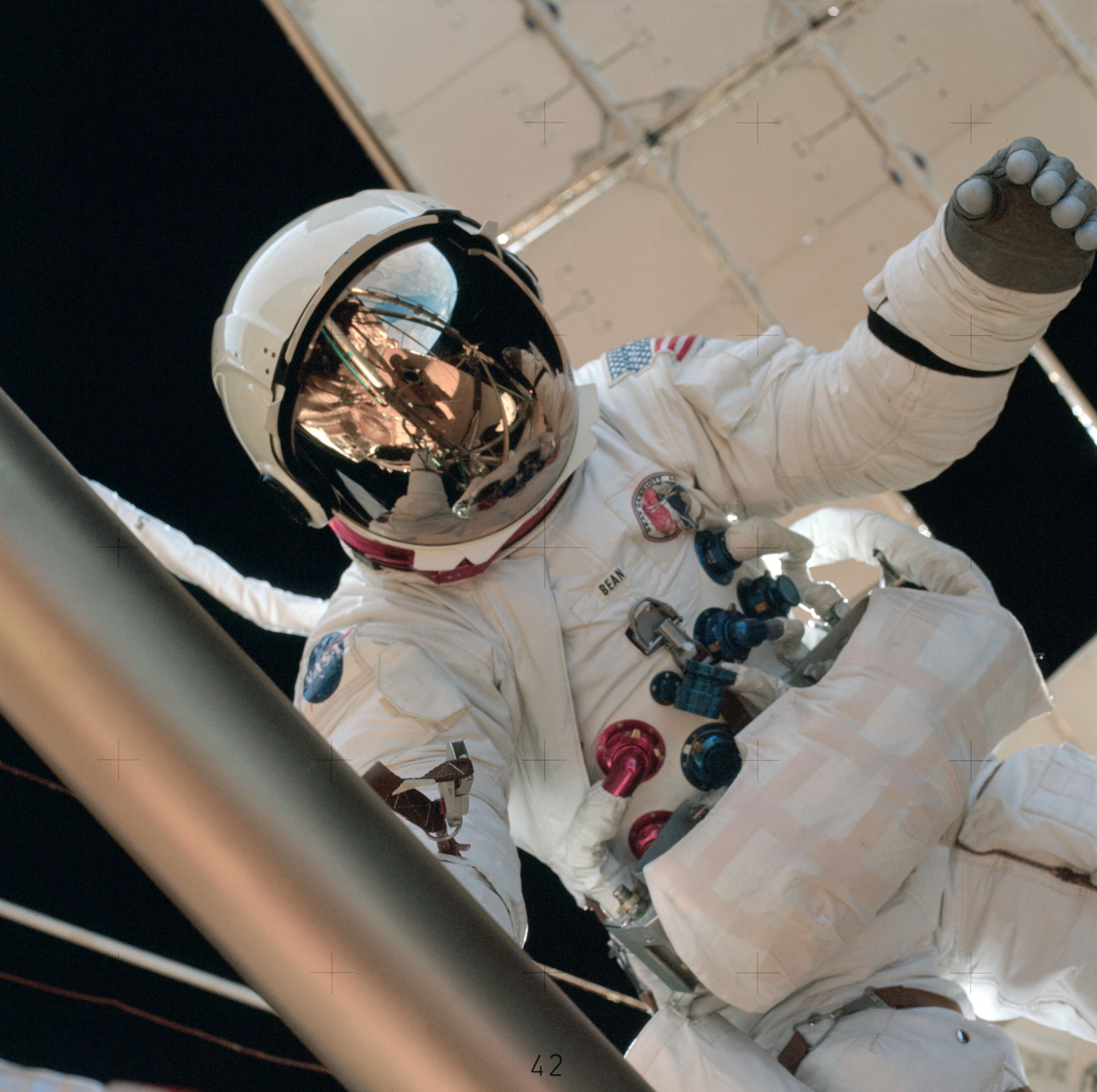
This week in 1973, the second crewed Skylab mission launched from NASA’s Kennedy Space Center. During the 59-day mission, a crew of three astronauts continued maintenance of the space station, performed extensive scientific and medical experiments, installed a twin pole solar shield, and more than doubled the previous record for length of time in space. Here, astronaut Alan Bean is near the Apollo Telescope Mount during the final spacewalk of the mission. NASA’s Marshall Space Flight Center provided the Saturn rockets for the four Skylab missions and directed many of the space station’s experiments. Today, the Payload Operations Integration Center at Marshall serves as “science central” for the International Space Station, working 24/7, 365 days a year in support of the orbiting laboratory’s science experiments. After 20 years of continuous human presence, the space station remains the sole space-based proving ground and stepping stone toward achieving the goals of the Artemis program. The NASA History Program is responsible for generating, disseminating, and preserving NASA’s remarkable history and providing a comprehensive understanding of the institutional, cultural, social, political, economic, technological, and scientific aspects of NASA’s activities in aeronautics and space. For more pictures like this one and to connect to NASA’s history, visit the Marshall History Program’s webpage. (NASA)
























